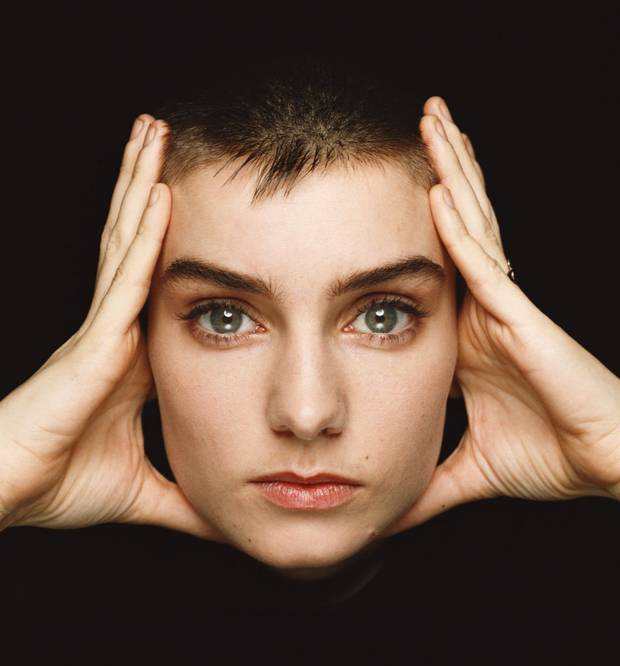The world wasn't ready for Sinead O'Connor
A pop star who didn't know her place. Who didn't stay in her lane. Who wrote her own definition of success. My kind of woman.
We sat in stunned silence as one of the most fierce, spectacular voices of our generation finished her cover of Bob Marley’s War a cappella, live on national television, then held up a photo to camera…and tore it to pieces.
The entire audience in that studio in Rockefeller Center seemed to have stopped breathing entirely.
Was that…the Pope? What’s happening? Is this planned? Is this a stunt? And wait, was that really the Pope?
FIGHT THE REAL ENEMY, she urged—demanded—staring right into our eyes, unmoving. She flung the torn remains of the photo directly at us, lowering her chin so we could hear the message in her own silence clearly: I gave you the instructions. Now go do it. It’s on you.
That was 1992. That was a full 10 years before the Spotlight Team at the Boston Globe explained to us just what enemy she was talking about.
They won a Pulitzer for it, and rightly so.
She won a ban from SNL, with a side of constant abuse and mockery (including on SNL) that lasted the rest of her life.
But as Sinéad tells it, she also won her life back that night.
If you weren’t watching the moment live, it’s hard to understand the power of it; the unwavering conviction it must have taken to do what she did at the exact moment her star was shining brightest.
Pop stars don’t tend to go ripping up portraits of religious leaders. Or pissing off Lorne Michaels.
Pop stars who sing the most heart-wrenchingly soulful and enduring love song straight up to #1 don’t blow up their careers live on television.
But then, she wasn’t ever really supposed to be a pop star. Sinéad O’Connor knew she was something else.
We heard it in her voice all along. We heard it in her lyrics, if we had listened beyond the love song. We just didn’t name it.
My friend
nails it here:The night she ripped up that picture, I was watching the broadcast live. It was shocking and I’m pretty sure I didn’t understand why she did it or precisely what she meant by it at the time. But, something in my gut trusted her. I trusted her because I knew she told the truth and said things out loud that I wanted to say (but wouldn’t be able to say for many more years.)
I trusted her. I know she told the truth.
Yes.
Why do we always seem to dismiss the truth-tellers who don’t come packaged the way we’re expecting them?
Do you notice that too?
With that, I want to gently usher you over to Cathleen’s essay on her own Substack, which is so stunning, so thorough, so insightful, I can’t imagine how she managed to write it so quickly. I think it somehow divinely flowed through her.
I’m glad to have learned a lot more about her life and legacy from Cathleen.
Of course there are still questions. (I mean 56, FFS.) But as I wrote recently, we need to make peace with the fact that we will never know anyone else’s entire story.
How Sinéad O’Connor died is not as important as how she lived.
I’m crushed that she died.
But I’m so very glad that she lived.







Oh my goodness, Liz, thank you.
I kind of feel like this is the sort of thing she'd want us to be doing.
Telling stories, finding connections, supporting each other.
Love you, lady.
She filled our heads and hearts with a voice that pierced through our souls. She’s the real influencer humanity needs. Though I can never get over how such soulful people stumble into the life’s vicious traps such as addiction and the like. But still, as you said, how she lived is what matters in the end. Thank you for sharing the other stack too. ❤️